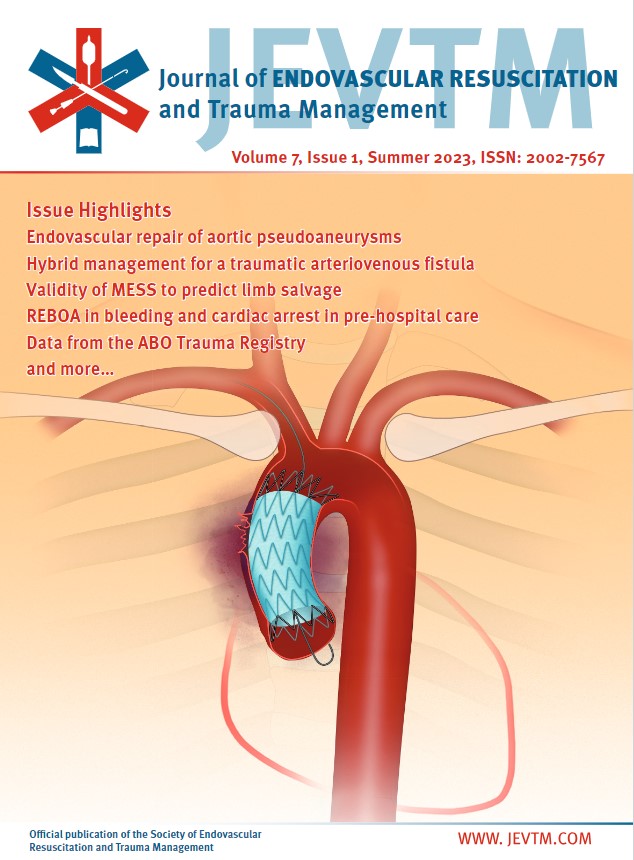Resuscitative Endovascular Balloon Occlusion of the Aorta (REBOA) After Traumatic Brain Injury
DOI:
https://doi.org/10.26676/jevtm.284Keywords:
Traumatic Brain Injury, REBOA, Non-Compressible Torso Hemorrhage, Trauma SurgeryAbstract
Background: The effects of resuscitative endovascular balloon occlusion of the aorta (REBOA) on progression of traumatic brain injury (TBI) are unclear. Two hypotheses prevail: increased mean arterial pressure may improve cerebral perfusion, or cause cerebral edema due to elevated intracranial pressure. This study compares outcomes in hypotensive, blunt trauma patients with TBI treated with and without REBOA.
Methods: A retrospective analysis compared hypotensive (systolic blood pressure [SBP] >90) blunt trauma patients with TBI treated with REBOA to those treated without. Patients with spontaneous circulation at admission and at initiation of aortic occlusion were included. Patients requiring cardiopulmonary resuscitation in the emergency department (ED) were excluded. Radius matching used age, injury severity score (ISS), abbreviated injury score (AIS)head, and Glasgow coma score (GCS) and SBP at ED arrival.
Results: Of 232 patients, 135 were treated with REBOA and 97 without. REBOA patients were older and had higher ISS, AIS-head, AIS-chest and AIS- extremity. There was no difference in TBI severity, and mortality. In the matched analysis (n = 76 REBOA, n = 54 non-REBOA), there was no difference in ISS, AIS-head, pre-hospital, ED, or discharge GCS, ED SBP, or mortality. Despite longer hospital stays for REBOA patients, there was no difference in intensive care unit length of stay, rate of discharge home, or discharge GCS.
Conclusions: REBOA was used in more severely injured patients, but was not associated with higher mortality rate. REBOA should be considered for use in patients with non-compressible torso hemorrhage and concomitant TBI, as it did not increase mortality, and outcomes were similar to non-REBOA patients.
Published
How to Cite
Issue
Section
License
Copyright (c) 2023 Journal of Endovascular Resuscitation and Trauma Management

This work is licensed under a Creative Commons Attribution-NonCommercial 4.0 International License.
Authors of content published in the JEVTM retain the copyright to their works.
Articles in the JEVTM are published under the terms of a Creative Commons CC BY 4.0 license, which permits use, downloading, distribution, linking to and reproduction in any medium, provided the original work is properly cited.




